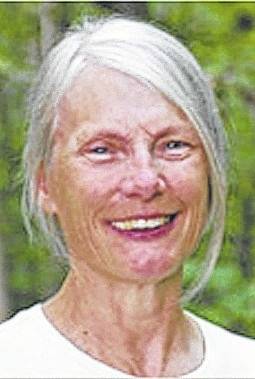
It is sad to share that the general public and most volunteers continue to be unable to visit Stratford Ecological Center on Liberty Road due to the COVID-19 pandemic. The staff now have a better idea of what to expect when school opens; there is unlikely to be any young children arriving on a school bus to experience our two-hour farm and nature tour. The new goal is to create a safe educational program for small groups of children aged 6-17 by registration only. Family programs will hopefully follow, and we encourage you to keep updated by checking our website.
The fields and gardens are responding to the heat and rain, and they are growing strongly. After emerging from the lane, the verdant corn in field 2 catches the eye. Farmer Jeff timed it perfectly to cultivate between the rows and disrupt the weed cycle. He planned to move on to field 3 after a rainstorm was predicted to drop a fifth of an inch and make the job easier, but it rained torrents for an hour and dropped over an inch, so he stayed home!
The machinery at Stratford is not the latest models by a long shot. It has always been a concern for Farmer Jeff that the corn planter sows the seed only a half inch deep and does not cover the seed so the birds cannot eat, or the rain wash it away. This spring he decided to search online to see if he could find an attachment that would do the job. He did and shared a photo with one of our farmhands, Bill Watterson, who is a whiz at repairing machinery and welding. Bill purchased supplies, and with help from another farmhand, created and attached a bar to hill up the soil. The two men watched as a delighted Jeff successfully planted field 7.
The 11 acres of woodland adjacent to U.S. Route 23, used for our Messages from the Earth program, now looks like a “proper forest” thanks to four hardworking college-age interns hired for a couple of weeks to clear the invasive honeysuckle. It took the sweating farm crew most of a day to transport the bushes to a bonfire which now stands 15 feet tall.
The Prairie is coming into bloom and the wide mowed paths allow easy access. The yellow black-eyed Susan, red cardinal flower, orange butterfly weed, pink coneflower, and the buds of wild Bergamot and blazing star make a wondrous picture. The last of the baby tree swallows nesting in the boxes in the Prairie grid have recently fledged. Their numbers look good, but not so for the bluebirds, who use the same boxes, with only one bluebird nest fledging.
In an ideal open flyway between the Prairie and the pond sit four tall poles supporting a total of 60 white gourd-shaped nesting boxes for purple martins. On July 9, I joined Shawna Stambaugh and another volunteer to observe and help during their weekly nest monitoring. I found out monitoring is a lot of work and concentration, and I applaud the women’s tenacity.
They count the eggs, babies, and clear the original nest material of twigs and mud lined with green leaves and replace, sometimes twice, with white pine needles. By checking they can spot and manage any problems, especially getting rid of mites which reduces stress on the babies. Their carefully recorded observations reflect the well-being of the parents who eat many insects and keep us comfortable.
Purple martins produce only one clutch per year; the cycle takes from the first bird’s arrival on April 1 to the middle of August when the family leave together. This year, 24 adult birds died as a result of the temperature on May 8. A lot of this year’s hatch were parented by birds born at Stratford last year who arrived later. The martins are members of the swallow family and can only be found in North and South America, where they winter mostly in Brazil.
Along with chimney swifts and barn swallows, purple martins are the only birds east of the Rocky Mountains who have adapted their nesting habits to use almost exclusively man-made housing. Stratford favors horizontal gourds, with an oblong starling-resistant entrance tunnel, which ensures the babies do not fall out or fledge too early. As I held the feathered babies, whose pin-point black eyes stared intently at me, I fell in love with them!
Later, I discovered 14-year-old Lucas and 11-year-old Jackson gluing together frames for more bee boxes. Presently, there are 18 hives at Stratford and there is room for 30. Both boys were knowledgeable, and Lucas and I got into quite a discussion about whether male bees can sting, and the answer is no! Jackson shared the reason for using a smoker whilst working with bees is that they think their hive is on fire and eat honey to energize themselves before fleeing. They become heavy and calm and accepting of the intrusion. Jackson intends to have his own beehive, and rather than place it in his suburban yard, he will locate it on his family’s farm in order to protect his neighbors with bee allergies.
The staff and interns continue to produce short videos for all ages on YouTube to keep you connected until we get together again. We hope you stay well and keep cool during the dog days.


